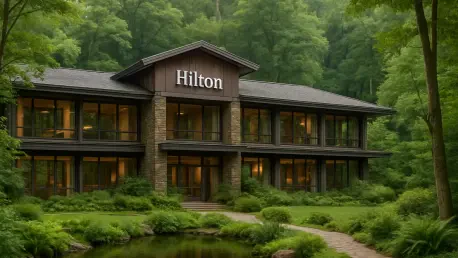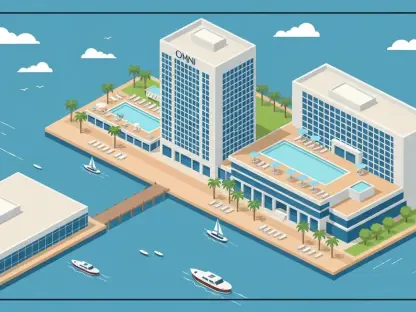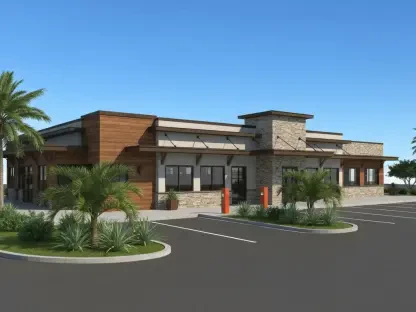Imagine a travel landscape where the allure of untouched wilderness meets the sophistication of upscale accommodations, drawing millions of adventurers annually to iconic destinations like Yellowstone National Park, and setting the stage for a transformative shift in hospitality. This is the dynamic market environment in which Hilton has strategically positioned itself with the recent opening of Starlite Yellowstone, a 133-room lifestyle hotel under its Tapestry Collection in West Yellowstone, Montana. This market analysis delves into the significance of this launch, exploring how it reflects broader shifts in consumer preferences toward experiential and nature-focused travel. The purpose is to dissect Hilton’s calculated expansion into the lifestyle segment and assess its implications for the hospitality industry.
The importance of this analysis lies in understanding how major players like Hilton are adapting to a post-pandemic surge in demand for unique, location-specific stays. With travelers increasingly prioritizing authenticity over standardization, the hospitality sector faces both opportunities and challenges in balancing luxury with environmental connection. This examination will uncover the trends driving this transformation, the specific market dynamics surrounding Starlite Yellowstone, and the potential future trajectories for the industry at large.
Dissecting Market Trends and Consumer Shifts
Surge in Experiential and Outdoor Travel Demand
The hospitality market is witnessing a profound shift as experiential travel takes center stage, particularly in destinations tied to natural wonders. Industry data indicates that over 70% of modern travelers seek accommodations that offer a deep connection to local culture or environment, a trend that has intensified since global travel resumed with renewed vigor. This growing appetite for outdoor-focused experiences, including glamping and nature tourism, has pushed hotel brands to innovate beyond traditional offerings, creating properties that resonate with the spirit of their surroundings.
Hilton’s entry into this space with Starlite Yellowstone taps directly into this burgeoning demand. Located just minutes from Yellowstone National Park’s west entrance, the hotel caters to a demographic eager for adventure without forgoing comfort. The strategic placement near natural attractions positions it as a gateway to immersive experiences, aligning with market patterns where proximity to national parks significantly boosts occupancy rates during peak seasons.
Moreover, the rise of family-oriented and tech-savvy travelers has further shaped this segment. Hotels are now expected to provide not just a place to rest, but a curated experience that blends digital convenience with authentic engagement. This dual expectation challenges brands to integrate cutting-edge amenities while maintaining a genuine sense of place, a balance that defines the current competitive landscape in lifestyle hospitality.
Hilton’s Strategic Expansion in Lifestyle Segments
Hilton’s broader market strategy reveals a deliberate pivot toward lifestyle and luxury brands, a move designed to capture the evolving preferences of discerning travelers. Through its Tapestry Collection, launched as a platform for boutique-style conversions, Hilton has been able to rapidly scale its presence in niche markets by transforming existing properties into unique, destination-driven hotels. This approach minimizes development costs while maximizing market penetration in high-demand areas.
The company’s partnerships, such as the collaboration with AutoCamp to offer outdoor-focused options for loyalty members, underscore a targeted effort to dominate the nature tourism boom. Industry insights suggest that such alliances are becoming critical for brands aiming to diversify their portfolios without overextending resources. Hilton’s plan to double its lifestyle portfolio to 700 hotels in the coming years, as articulated by its leadership, signals an aggressive push to lead this growing category.
This expansion is not without its hurdles, as the lifestyle segment requires nuanced marketing to appeal to varied demographics, from adventure seekers to luxury enthusiasts. Yet, Hilton’s focus on conversion-friendly brands like Tapestry and Curio Collection provides a flexible framework to adapt to regional tastes and market fluctuations, positioning the company as a frontrunner in redefining hospitality standards.
Competitive Dynamics and Regional Challenges
Operating in a market like West Yellowstone introduces specific competitive and regional dynamics that shape the success of properties like Starlite Yellowstone. The area experiences stark seasonal variations, with summer months drawing massive crowds to the park, while winter periods often see a sharp decline in visitation. This cyclical nature demands innovative strategies, such as off-season programming or partnerships with local winter sports outfitters, to maintain steady revenue streams.
Environmental stewardship also emerges as a critical factor in this region, where proximity to a national park heightens expectations for sustainable practices. Market research highlights that a significant portion of travelers are willing to pay premiums for eco-conscious accommodations, pushing hotels to invest in green initiatives. Failure to meet these standards can result in reputational risks, especially in sensitive ecosystems where community and regulatory scrutiny is high.
Additionally, the competitive landscape around Yellowstone is crowded with both independent lodges and major chains vying for market share. Differentiation through design and amenities becomes paramount, as seen with Starlite’s use of natural materials and tech-driven features like the Connected Room system. Navigating these regional and competitive pressures will test Hilton’s ability to maintain a distinct edge while adhering to market expectations for responsibility and innovation.
Forecasting the Future of Nature-Focused Hospitality
Projected Growth in Lifestyle and Outdoor Segments
Looking ahead, the hospitality market is poised for continued growth in the lifestyle and outdoor travel segments, with projections estimating a significant uptick in demand through 2027. Analysts anticipate that nature-focused destinations will see a steady increase in visitation as urban populations seek respite in natural settings, driving occupancy rates for strategically located properties. Hilton’s investment in this niche, exemplified by Starlite Yellowstone, positions it to capitalize on this upward trajectory.
Technological integration is expected to play a pivotal role in shaping future offerings, with advancements like AI-driven personalization and enhanced digital access systems becoming standard in upscale lifestyle hotels. These innovations promise to elevate guest experiences but also pose challenges in terms of implementation costs and potential over-reliance on tech at the expense of human interaction. Brands that strike the right balance will likely dominate market share in the coming years.
Economic factors, such as inflation and fluctuating travel budgets, could influence pricing strategies for luxury and nature-focused accommodations. Regulatory changes, particularly around environmental impact in protected areas like Yellowstone, may also introduce new compliance costs. Despite these uncertainties, the convergence of outdoor tourism and digital convenience is set to define the next wave of hospitality growth, with Hilton well-placed to lead through its expansive vision.
Innovative Directions and Market Opportunities
Speculative trends suggest that the industry might witness even bolder concepts in the lifestyle segment, such as temporary glamping hubs or mobile accommodations tied to national park itineraries. These ideas align with consumer desires for hyper-unique experiences and could open new revenue streams for brands willing to experiment. Hilton’s current trajectory, with plans for specialized collections under Tapestry, hints at potential explorations into such unconventional formats.
Market opportunities also lie in deepening community engagement and sustainability efforts, particularly in regions sensitive to overtourism. Hotels that foster local partnerships and adopt eco-friendly practices can build loyalty among environmentally conscious travelers, a demographic projected to grow substantially. For Hilton, leveraging Starlite Yellowstone as a testing ground for such initiatives could yield valuable insights for scaling similar models across its portfolio.
Furthermore, the rise of hybrid travel—combining leisure with remote work—presents an untapped market for nature-focused hotels. Properties that offer robust connectivity alongside serene environments could attract digital nomads seeking extended stays. This emerging trend offers a chance for innovation in programming and design, areas where Hilton could further differentiate itself from competitors in the lifestyle space.
Reflecting on Market Insights and Strategic Pathways
Looking back, the analysis of Hilton’s venture into nature-focused hospitality through Starlite Yellowstone revealed a market increasingly driven by experiential travel and environmental connection. The examination highlighted how consumer shifts toward authenticity and adventure reshaped industry priorities, with Hilton’s strategic expansion into lifestyle segments positioning it as a key player. Regional dynamics and competitive pressures in areas like West Yellowstone underscored the complexities of operating in high-demand natural destinations.
The implications of these findings pointed to a future where innovation and sustainability became non-negotiable for hospitality brands. For industry stakeholders, the path forward involved investing in properties that prioritized a deep sense of place, integrating technology thoughtfully to enhance rather than overshadow guest experiences. Exploring partnerships with local entities and off-season strategies emerged as vital for maintaining viability in fluctuating markets.
Moving ahead, hoteliers could consider piloting hybrid offerings that catered to both leisure and remote work travelers, while committing to green certifications to appeal to eco-conscious demographics. For Hilton, scaling the lessons from Starlite Yellowstone across other properties offered a blueprint for sustained growth. These actionable steps provided a roadmap for navigating the evolving landscape, ensuring that the industry adapted to meet the nuanced demands of modern travelers with creativity and foresight.









